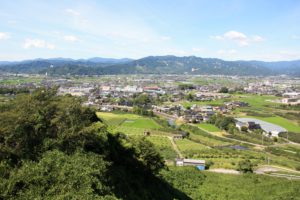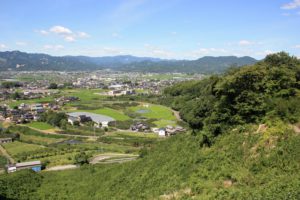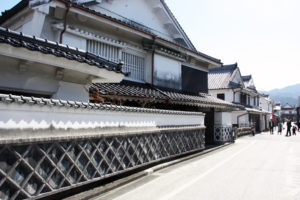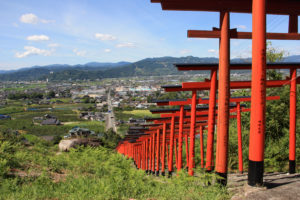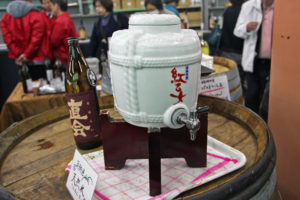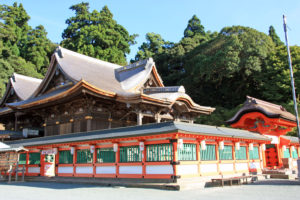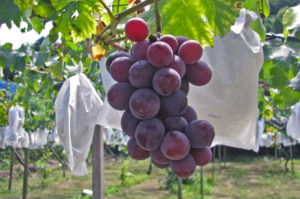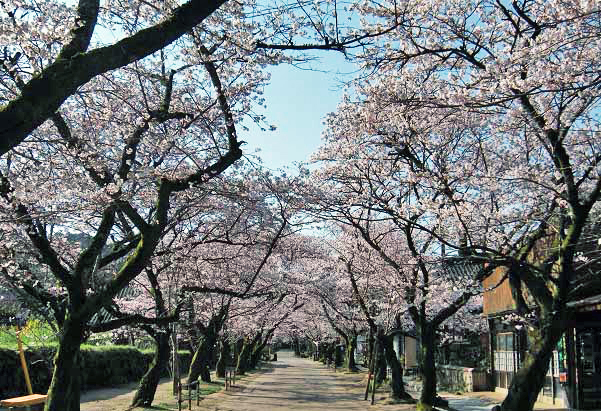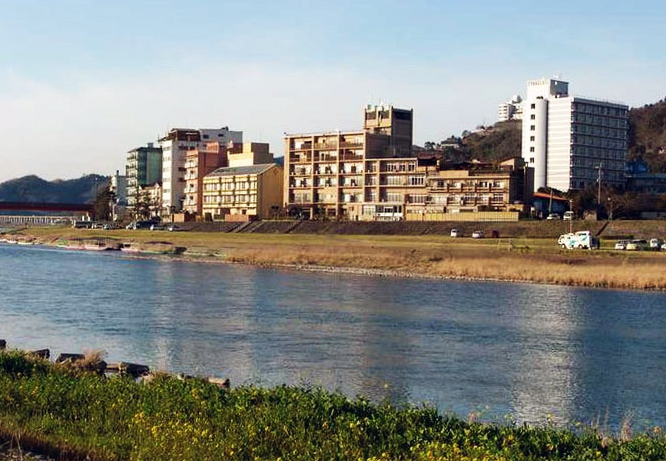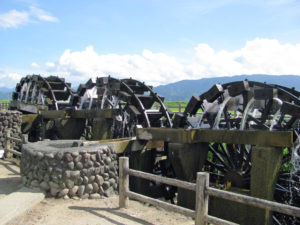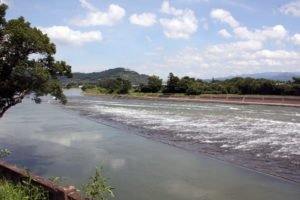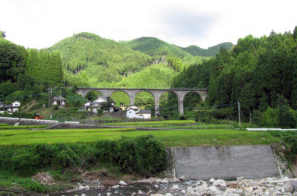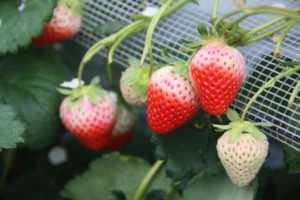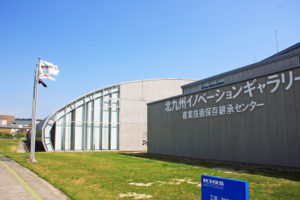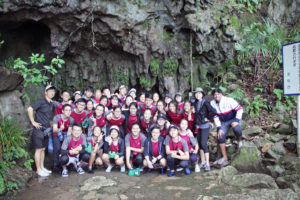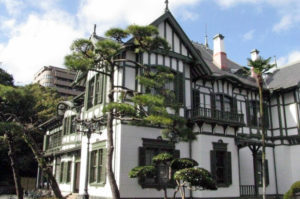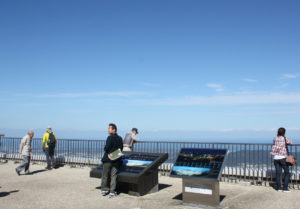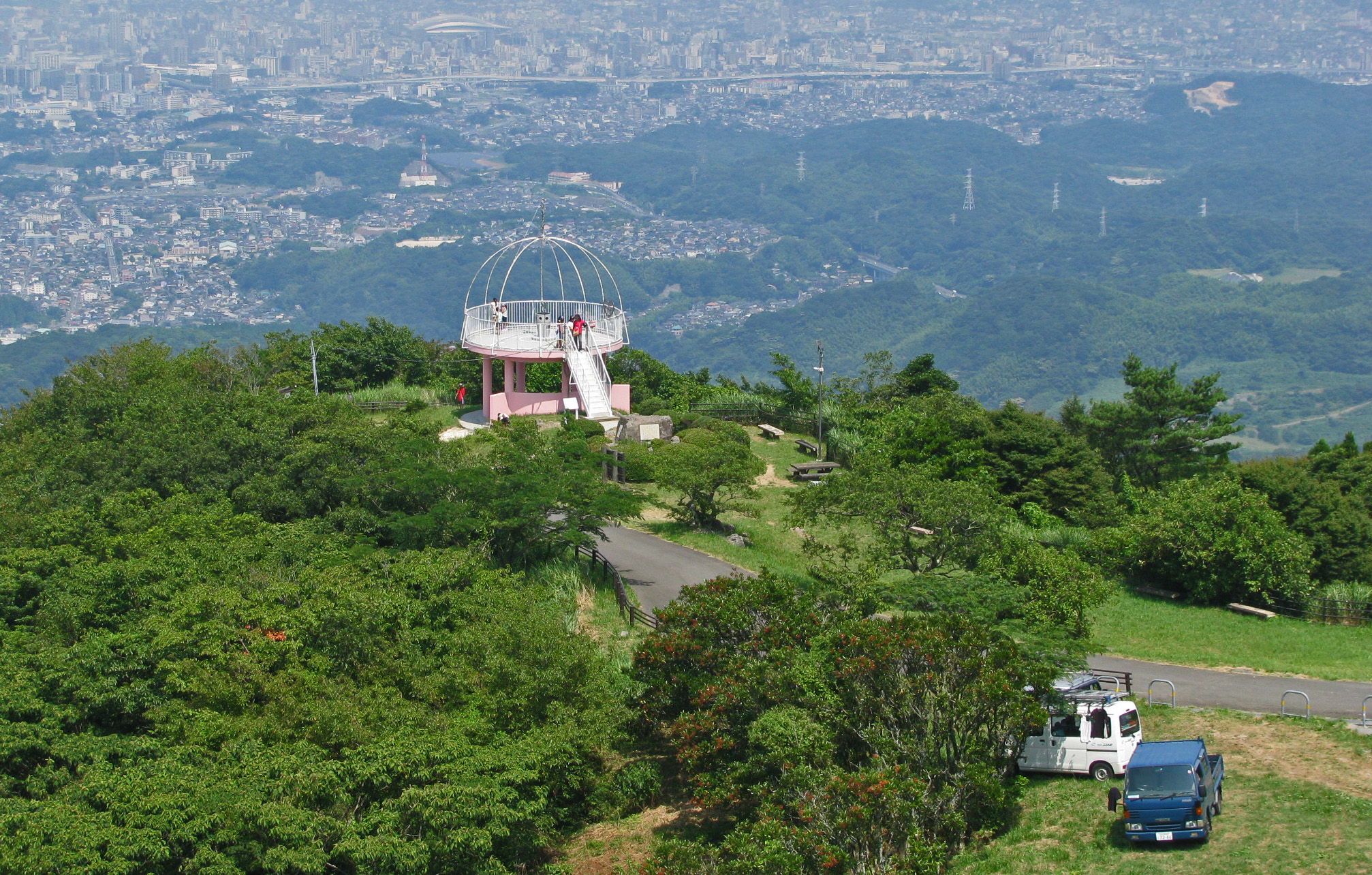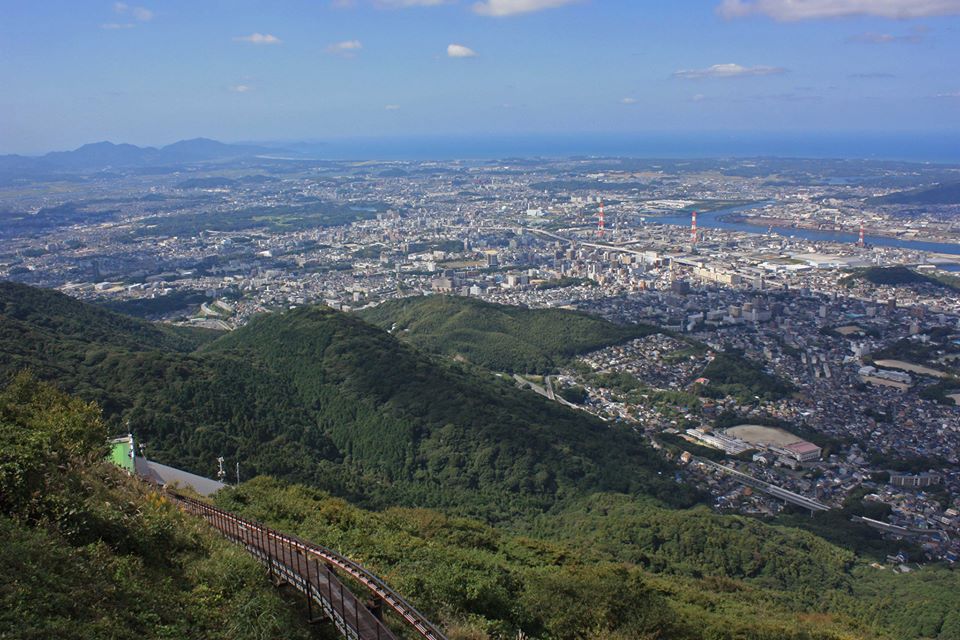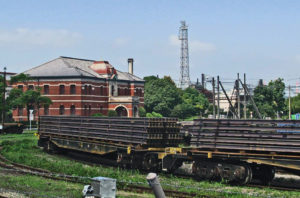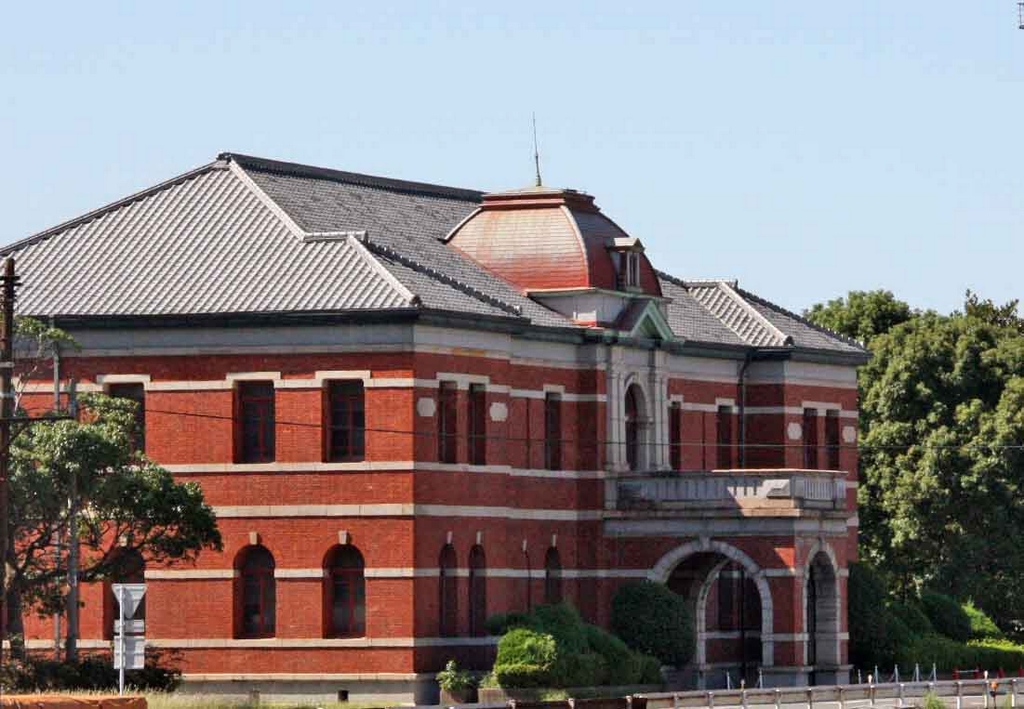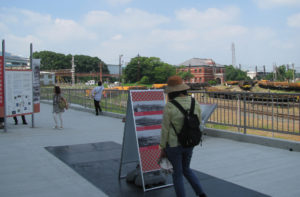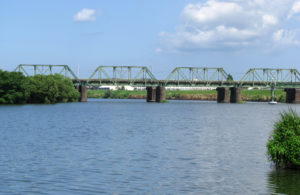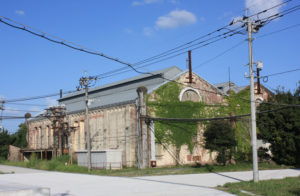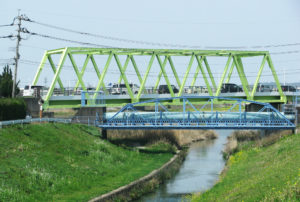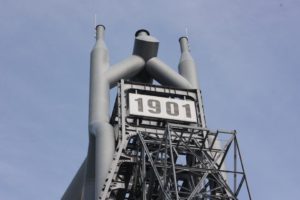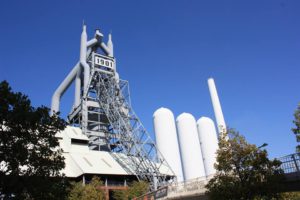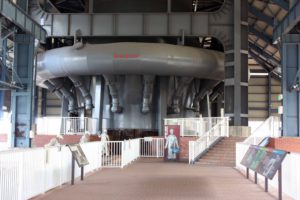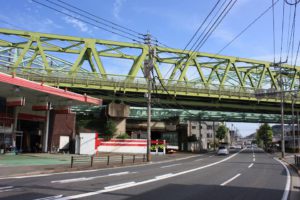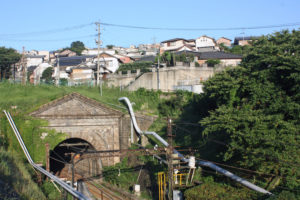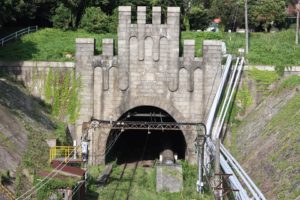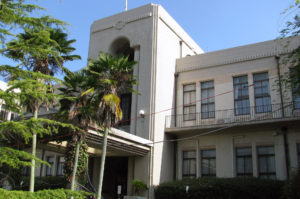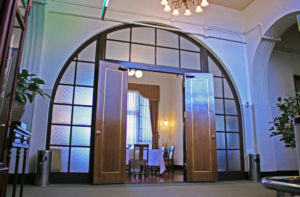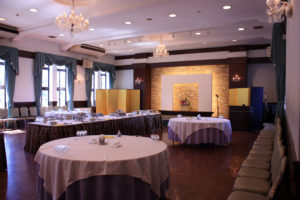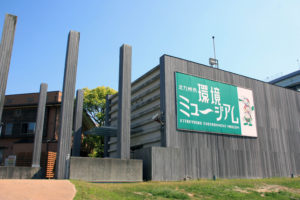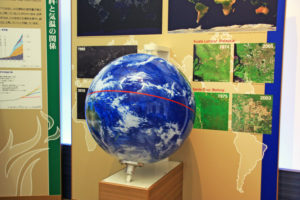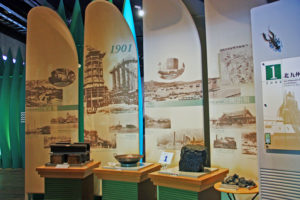Ukiha travel guide
Ukiha blessed with nature where many orchards spread out at the foot of Mino mountain range.
Yoshii, in the center of Chikugo flourished as a post town during the Edo period, and there a
lot of Sake brewery which have established the Edo period. A fruits picking and Sake brewery
visit can be enjoyed here.
|
Yoshii machi |
Ukiha machi |
Fruit fields |
Authentic Japanese restaurant, Shirakabe
General information
| Address | City hall : 316 Niiharu, Yoshii-machi, Ukiha-city, Fukuoka-prefecture |
| Access |
50 minutes by a vehicle from Fukuoka-city 45 minutes by a vehicle from Dazaifu-city 60 minutes by a vehicle from Yaanagawa-city 90 minutes by a vehicle from Kitakyushu-city |
| Population | 28,000 Population density 240 |
Ukiha

Home Tailor-made tours Study tours Christian Pilgrimage tours Golf tour Kyushu tour packages
Asakura travel guide
It is a thriving area of agriculture in Chikugo region, Fukuoka-prefecture where has rich nature
and many historical heritages. And also there is a Onsen Resort along the Chikugo River.
The modern city of Asakura was established on March 20, 2006, from the merger of the former town
of Asakura, absorbing the city of Amagi, and the town of Haki. Asakura is located in south central
Fukuoka Prefecture and is spreading in the Chikugo plains of the Chikugo River basin which is the
big river in Kyushu.
Fujii Apiary
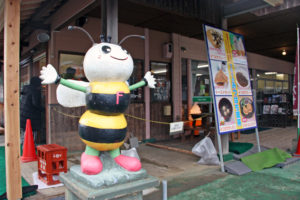 |
The apiary collecting honey while traveling with bees from Kagoshima to Hokkaido. The Apiary was established in Asakura in 1909 and offers delicious Japanese milk vetch honey and acacia honey, both of which have a deep and sophisticated taste. |
Tachiarai Peace Memorial Museum
General information
| Address | City hall : 412-2 Bodaiji, Asakura-city, Fukuoka-prefecture |
| Access |
50 minutes by a vehicle from Fukuoka-city 30 minutes by a vehicle from Dazaifu-city 60 minutes by a vehicle from Yaanagawa-city 90 minutes by a vehicle from Kitakyushu-city |
| Population | 50,700 Population density 205 |
Asakura

Home Tailor-made tours Study tours Christian Pilgrimage tours Golf tour Kyushu tour packages
Chikugo region travel guide
Agricultural industries spreading in the Kyushu’s largest Chikugo plain.
Chikugo region consists of Toho Village, Asakura, Akizuki, Ukiha, Kurume, Yame
and Hoshino Village
Exploring Chikugo
Asakura is the only area in Japan to use water wheels for irrigation to rice field
Akizuki is a former Castle town located in northern part of Asakura. You can enjoy the harmony of
countryside landscape and former castle town scenery that makes the atmosphere like a time of
400 years ago.
|
Sakurano-baba Street |
Cherry Blossoms |
Autumn leaves
|
A tranquil Onsen Resort near Fukuoka-city and is located on the banks of Chikugo River.
The quality hot spring is weakly alkaline and sulfur is mixed and has the effect of dropping
old horn and creating beautiful skin.
|
Gate way |
Chikugo River
|
Onsen resort |
Ukiha blessed with nature where many orchards spread out at the foot of Mino mountain range.
Yoshii, in the center of Chikugo flourished as a post town during the Edo period, and there a lot
of Sake brewery which have established the Edo period. A fruits picking and Sake brewery
visit can be enjoyed here.
|
Yoshii machi |
Ukiha machi |
Ukiha Inari Shrine |
Time-honored scenery, back to 100 years ago, located in Yoshii-machi, Shirakabe, literary
meaning is white wall. The avenue of houses with white wall were constructed about 100
years ago. About 250 houses in the area has been designated as National important
raditional buildings preservation district.
 |
 |
 |
The largest Shrine in Kyushu and the shrine is specified as Ichino-miya or the representative
Shrine in Chikugo region. Located in Kurume-city, stand at the middle of Kora Mountain.
From the Shrine compound, breath taking magnificent view of Chikugo plain can be seen.
|
Torii Gate, entrance of Shrine |
Kyushu’s largest Shrine building |
Magnificent view from the Shrine |
|
The country of Green Tea, the highest grade tea |
Yame is the Centre of Japanese artificial crafts |
The most beautiful village in Japan |
Chikugo region is the best place for Fruits harvest experience throughout the year.
Strawberry, Grape, Pear, Apple and Persimmon, in Asakura, Ukiha, Tanushimaru and Yame.
|
Strawberry |
Grape |
Apple |

Shiranoe Botanical Garden
The garden is located in Moji, Kitakyushu-city, and facing to Suo Sea.
Many kind of flowers, plants and birds including migratry birds through the year.
Address : Shiranoe 2, Moji-ku, Kitakyushu-city, Fukuoka-prefecture
 |
 |
 |
 |
 |
 |
 |
 |
 |
 |
 |
 |
Your equiry can be sent by selecting the Enquiry Form link below.
You can also contact us by e-mail at info@japan-kyushu-tourist.com
And we would love to chat about your travel plans on the phone as well,
please ring our office a call in English Tel : +81-93-521-8897
HOME About us Our Services Terms and Conditions
Study tour in the STEM Education field
and Mathematics) as well as Japanese Culture.
|
Learn Science, Environment, Nature, Industry, various history |
Field of science devoted to the study of the lands, features, inhabitants, phenomena of Earth |
Various unique architectures designed by renowned designers |
Your equiry can be sent by selecting the Enquiry Form link below.
You can also contact us by e-mail at info@japan-kyushu-tourist.com
Tel : +81-93-521-8897 , Fax : +81-93-521-8898
Address : AIM buiding 6th floor, 3-8-1 Asano, Kokura-kitaku, Kitakyushu-city, Fukuoka-prefecture
HOME About us Our Services Terms and Conditions
Kitakyushu-city hiking tour
Although probably better known as industrial and environmentally advanced cities,
Kitakyushu-city is also blessed with spectacular & stunning natural feature surrounding
mountain and Seto inland Sea as well as Genkai Sea, and is located in the Seto Inland Sea
National Park, Kitakyushu Quasi–National Park ( Mount Sarakura and Hiraodai Karst Plateau)
and Genkai Quasi-National Park. The city has developed a vibrant hiking courses to go
along with its geography. We offer abundant hiking opportunities in the beautiful nature of
Kitakyushu-city.
Mount Satakura is a part of Kitakyushu Quasi-National Park and is located in Yahata-higashi.
The height of the mountain is 633 metre from the sea level. The 8 courses have developed from
Mount Sarakura Cable Car Station to the summit of the mountain.
It takes about 120 minutes and form Cable Car Station to the top of the mountain.
 |
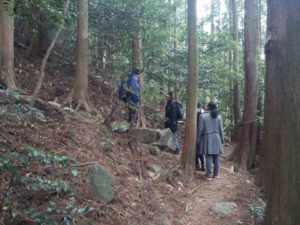 |
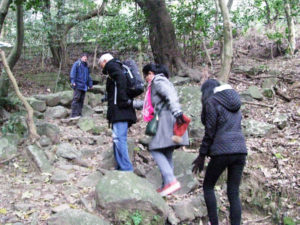 |
Spectacular view from the summit of mount Sarakura can be enjoyed
|
|
|
|
Hiraodai Karst Plateau is also part of Kitakyushu Quasi-National Park along with Mount Sarakura
and one of the three largest karst plateau in Japan along with the Akiyoshi-dai Plateau and the
Shikoku Karst. It is located in southeastern part of Kitakyushu-city. At altitudes between 400 and
600 meters above sea level and stretching 6 km from north to south and 2 km from east to west.
There are a lot of hiking courses you can enjoy, and best season are spring and autumn.
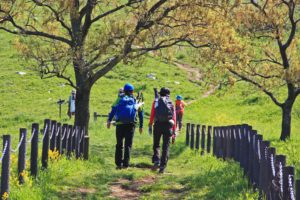 |
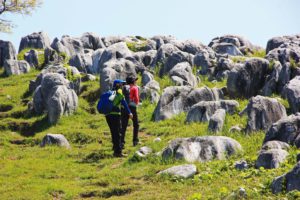 |
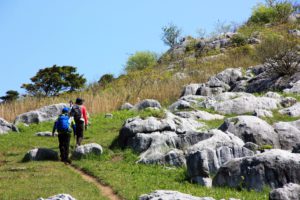 |
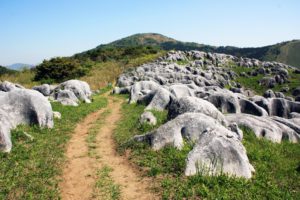 |
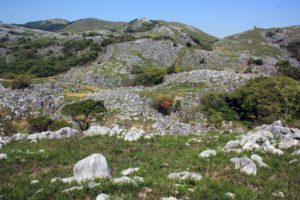 |
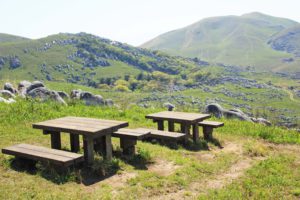 |
Mount Komunji
Mount Komonji is very close to JR Kokura Station and the height is 366 metre from the sea level.
The hiking courses are developed from Adachi-yama forest park to the top of the mountain.
It is very easy hiking and takes about 60 minutes.
 |
 |
 |
From the top, the magnificent view of heart of Kitakyushu-city can be seen.
 |
 |
 |
Location of Kitakyushu-city
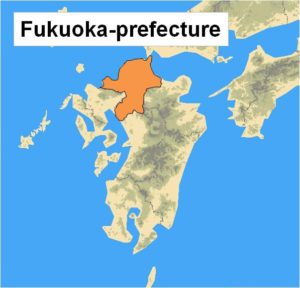
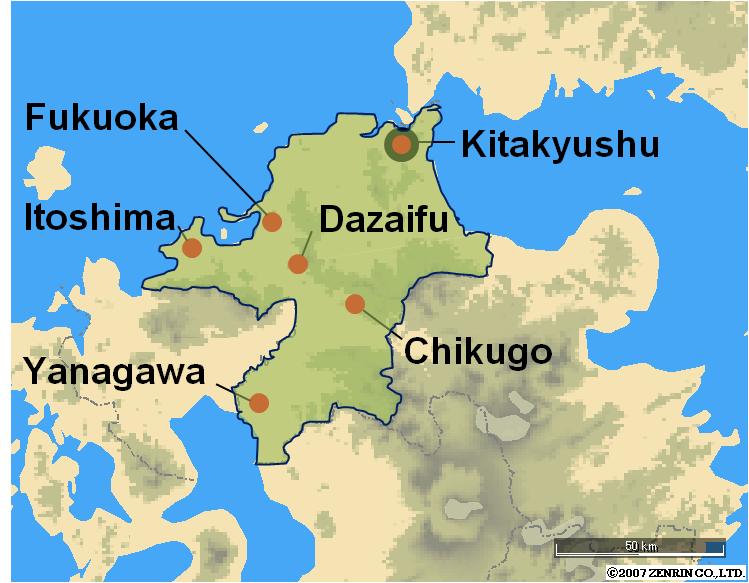
Your equiry can be sent by selecting the Enquiry Form link below.
You can also contact us by e-mail at info@japan-kyushu-tourist.com
Tel : +81-93-521-8897, Fax : +81-93-521-8898
Address : AIM buiding 6th floor, 3-8-1 Asano, Kokura-kitaku, Kitakyushu-city, Fukuoka-prefecture
Tour results
We are offering various types of tours, and the tour results up to now are shown links below.
Tailor-made tour Study tour Golf tour
HOME About us Our Services Terms and Conditions
Industrial Heritages in Kitakyushu
Kitakyushu-city is the industrial innovation city where a lot of Japan’s Industries were born
and Japan’s industrial modernization has been achieved. The city presents various Industrial
Heritages including UNESCO World Herigate of Japan’s Meiji Industrial Revolution.
First Head Office of the Steel Works UNESCO World Heritage
Built in 1899, ahead of production facilities. It is an architectural fusion of Japanese and
European design, a two story red brick building with bilateral symmetry and a central dome
set in a Japanese tile roof.
|
World leading rails producing in the Steel Works |
First Head Office building registered on the World Heritage |
Observation deck of the World Heritage |
Onga River Pump Station, UNESCO World Heritage
Built in 1910 on the east bank of the Onga River. It served, and still serves, to deliver industrial
water to Yawata via an 11.4 km pipeline. This supply is integral to the steel production process
and was necessary to cope with the 1st phase expansion of the Imperial Steel Works.
|
Onga River |
Onga River Pump Station |
Water piping to the Steel Works |
The first-class civil construction heritage that triggered the registration of World Cultural Heritage of
Meiji Japan’s Industrial Revolution.Th e Kawachi Reservoir was constructed for the industrial water
supply to Yawata Steel Works.
 |
 |
 |
The Blast Furnace used to make the pig iron and was where Japan’s steel industry began in 1901.
It contributed greatly to the development of the Japanese steel industry and was used until 1972,
and has been preserved just as it was.
|
Indication of the year of Steel Works operation commencement |
Proper of Blast furnace, Hot Stoves and Stack |
Cast house floor, the pig iron is being discharged |
Dedicated railway for Yawata Steel Works
Connected between Yawata and Tobata. Construction work took three years, and completed in
1930. The most difficult and hard work was making Miyatayama tunnel with a total length of 1180m
due to suffering from floods. The gates of the Miyatayama tunnel are decorated with stately designs.
|
The rail way crossing the road |
Miyatayama tunnel Yahata side |
Miyatayama tunnel Tobata side |
Your equiry can be sent by selecting the Enquiry Form link below.
You can also contact us by e-mail at info@japan-kyushu-tourist.com
And we would love to chat about your travel plans on the phone as well,
please ring our office a call in English Tel : +81-93-521-8897
HOME About us Our Services Terms and Conditions
Solid Waste management & Recycling technologies in Kitakyushu
Historically, waste management systems focused on collection and disposal waste to protect
the health of city inhabitants and to improve the aesthetic appearance of territories. 19th century,
as cities grew and industrialized, more waste was produced and its composition changed dramatically.
Environmental protection and conservation started to receive increasing attention, and by the 20th
century waste was increasingly viewed also as a resource to recover materials and energy.
In the more economically developed countries, waste management gradually evolved from a focus
on disposal to a focus on prevention, recycling, and recovery.
Now, Japan is a global leader in the development and application of environmental policy in the
waste sector and Kitakyushu-city is the advanced city of solid waste management in Japan.
Solid waste management in Kitakyushu-city
Comprehensive solid waste management system can be learned from waste collecting procedure
at household to the final stage of waste treatment such as incineration, landfill and recycling.
Visitor Center
Eco Project information center that supports the Eco-town. It introduces initiatives and activities
implemented in Eco-town to encourage people to proactively used the facility for such activities
as environmental study sessions and interaction amongst visitors.
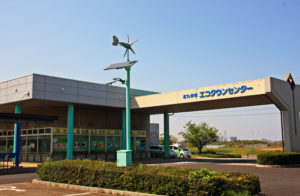 |
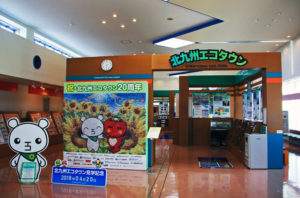 |
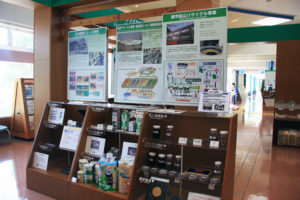 |
The museum has Environmental learning function, Environmental information function and
Environmental activity function. The Environmental improvement history of Kitakyushu, Global
warming and other various environmental issues can be learned.
Waste Collecting and separating facilities
・Hiagari can and bottle recycling Center
・Honjo can and bottle recycling Center
・Hiagari bulky garbage recycling Center
Recycling facilities
Plastic PET Bottle recycling / Nishi-Nippon PET Recycling
PET (polyethylene terephthalate) bottles are sorted by municipalities and recycled into pellets
and flakes, which can be used as raw materials for polyester fibers and egg cartons.
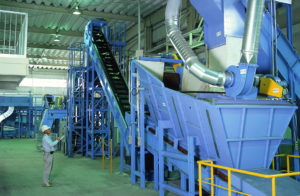 |
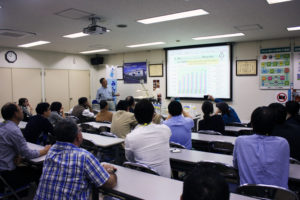 |
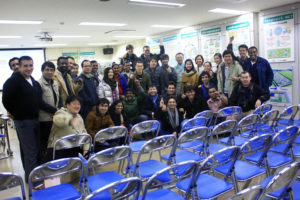 |
Waste paper recycling / Kyushu Seishi
Refined waste papers is recycled into toilet papers. Sludge generated during the toilet paper production
process is used to produce a foaming inhibitor used by steel works.
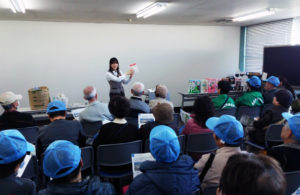 |
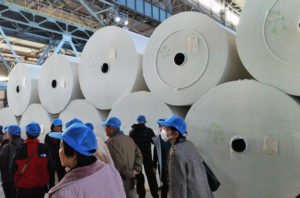 |
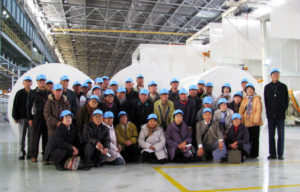 |
Other facilities
・Plastic material recycling
・Office equipment recycling
・Automobile recycling
・Home Appliance recycling
・Fluorescent tube recycling
・Medical instrument recycling
・Mixed construction waste recycling
・Comprehensive nonferrous metal recycling
・PCB-polluted soil purification project
・Cooking oil recycling
・Can recycling
Final treatment facilities
Melting Furnace / Sin-Moji Plant
The collected waste including metals is melted at over 1,700 degree Celsius in the Melting Furnace
and then the melted slag and metals are discharged. The slag is used as raw materials for pavement
and bricks and the metals are re-used for other steel products. The process and technology of the
Melting Furnace can be learned.
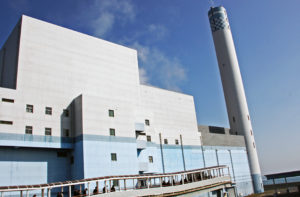 |
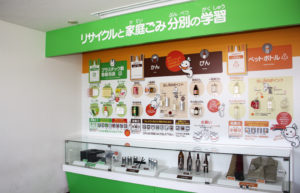 |
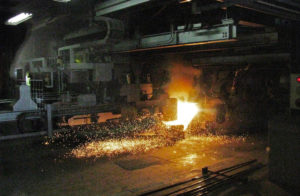 |
Other facilities
・Kogasaki Incineration Furnace
・Hibikinada Landfill area
Other facilities related to Recycling and Waste management
World’s first hydrogen station for vehicle to utilize the wastewater treated in the Fukuoka Chubu
Sewage Treatment Center. The process has been developed as a result of the verification testing
of technology for hydrogen creation sourced from wastewater biogas.
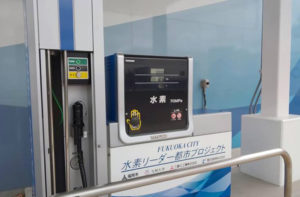 |
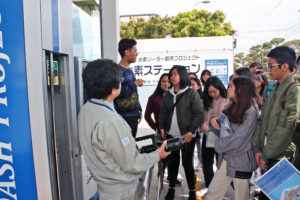 |
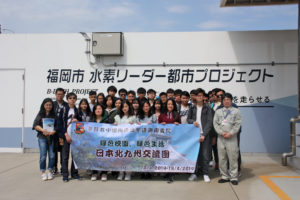 |
The biomass recycling facility that started operations in November 2006.It takes kitchen waste
from the town’s households and restaurants, along with septic tank sludge and raw sewage,
and uses a methane fermentation process to turn it into a biomass that can be used for power
generation. After the fermentation, the digestive fluids are used as liquid fertilizer. Furthermore,
Oki Town was the second in the country to make a zero-waste declaration, which it officially
announced in March 2008 with its Oki Town Mottainai Declaration.
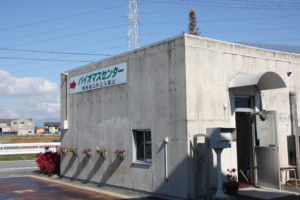 |
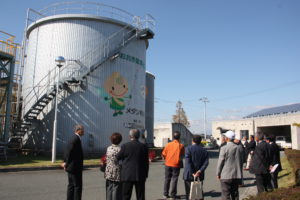 |
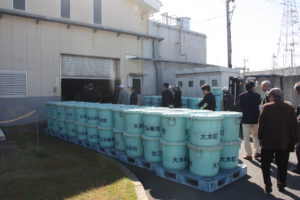 |
Hiagari Sewage water treatment plant
The sewage come through the sewer pipe is purified in the plant and flow into the sea. There is an
also new technology plant which the electricity is generated using the sludge from sewage. At the
Visitor Center established in 2015, sewage treatment process and technologies can be learned.
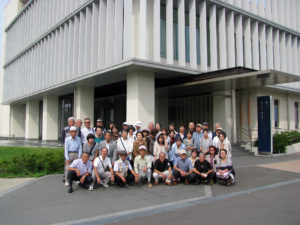 |
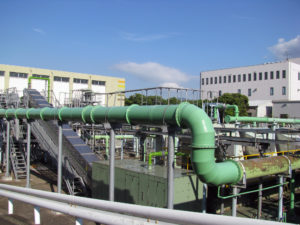 |
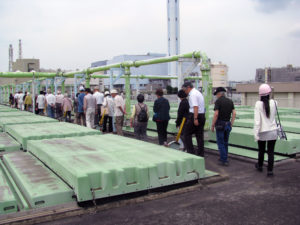 |
The Plant making fresh water from sea water and sewage water established in 2011.
The desalination process and technology can be leared.
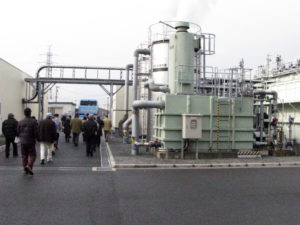 |
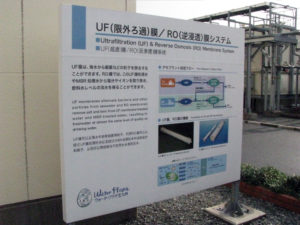 |
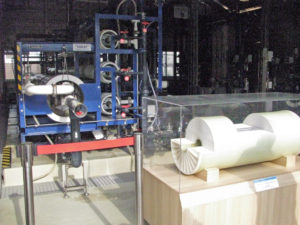 |
Nippon Steel / Yawata Works
Japan’s first modern steel making company established in Kitakyushu in 1901. Now, becoming
the best steel maker with World-leading capabiities. Process of steel making can be learned to
visit Blast Furnace and Hot rolling mill plants.
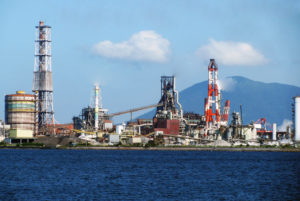 |
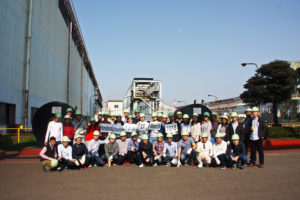 |
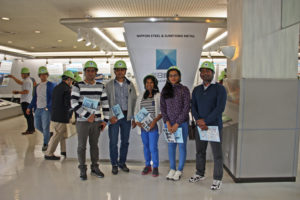 |
Japan’s largest Biotope, the Pradise of creatures made over the year in the waste disposal site.
237 kind of birds including circus spinouts listed on the Japan’s endangered species and 284 kind
of vegetation have been confirmed in the Biotope of 41 hectares.
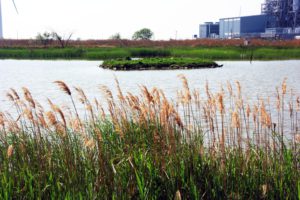 |
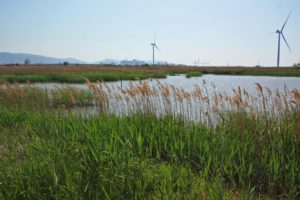 |
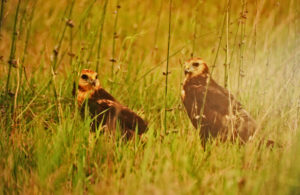 |
Your equiry can be sent by selecting the Enquiry Form link below.
You can also contact us by e-mail at info@japan-kyushu-tourist.com
Tel : +81-93-521-8897 , Fax : +81-93-521-8898
Address : AIM buiding 6th floor, 3-8-1 Asano, Kokura-kitaku, Kitakyushu-city, Fukuoka-prefecture
Hiagari Sewage water treatment plant
The sewage come through the sewer pipe is purified in the plant and flow into the sea. There
is an also new technology plant which the electricity is generated using the sludge from sewage.
At the Visitor Center established in 2015, sewage treatment process and technologies can be
learned.
 |
 |
 |
General information
| Address | 96-3 Nishiminato-machi, Kokura-kitaku, Kitakyushu-city, Fukuoka-prefecture |
| Access | 20 minutes by a vehicle from JR Kokura Station |
| Days of visit | Weekdays except Saturdays, Sundays and National Holidays |
| Fee | No visiting fee is required |
| Arrangment | Japan KYUSHU Tourist organize to visit |
Your equiry can be sent by selecting the Enquiry Form link below.
You can also contact us by e-mail at info@japan-kyushu-tourist.com
Tel : +81-93-521-8897, Fax : +81-93-521-8898
Address : AIM buiding 6th floor, 3-8-1 Asano, Kokura-kitaku, Kitakyushu-city, Fukuoka-prefecture
HOME About us Our Services Terms and Conditions
Tenjin Underground shopping arcade
The cobblestone walks leading to the Tenjin Subway Station add a quaint atmosphere
to this underground arcade. Shops in the arcade bring the fashion of Tokyo, Paris, Milan,
London and New York to Fukuoka.
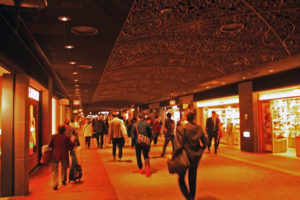 |
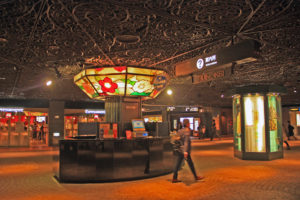 |
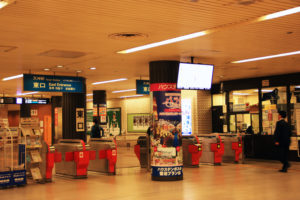 |
The mall is also connected to about 20 nearby buildings and shopping facilities, allowing shoppers to avoid
bad weather.
Location of Fukuoka-city
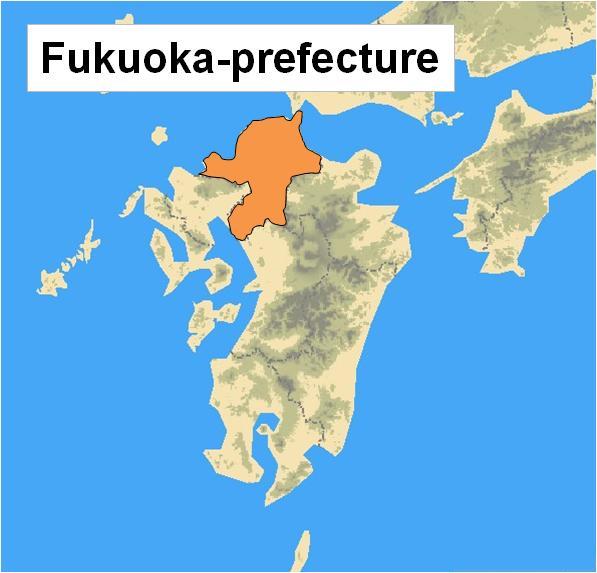
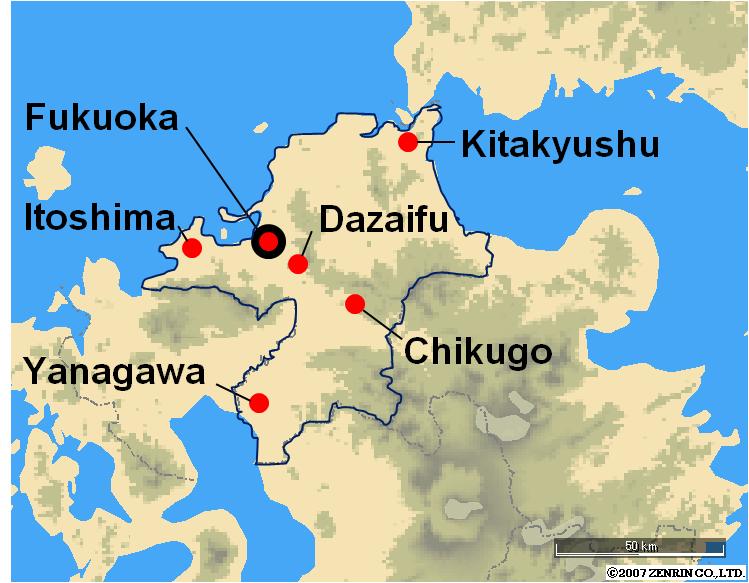
General information
| Address | Tenjin Chuo-ku, Fukuoka-city |
| Access |
A short walk from Tenji Subway station
20 minutes by a vehicle from Fukuoka Airport 10 minutes by a vehicle from JR Hakata station 30 minutes by a vehicle from Dazaifu 30 minutes by a vehicle from Itoshima 70 minutes by a vehicle from Yanagawa 70 minutes by a vehicle from Kitakyushu-city |
Your equiry can be sent by selecting the Enquiry Form link below.
You can also contact us by e-mail at info@japan-kyushu-tourist.com
Tel : +81-93-521-8897, Fax : +81-93-521-8898
Address : AIM buiding 6th floor, 3-8-1 Asano, Kokura-kitaku, Kitakyushu-city, Fukuoka-prefecture
HOME About us Our Services Terms and Conditions









